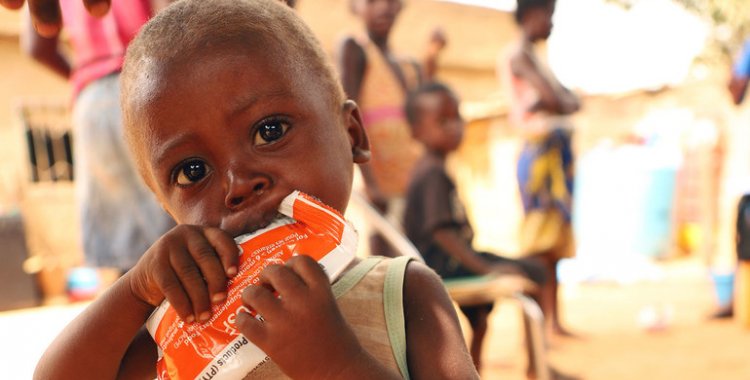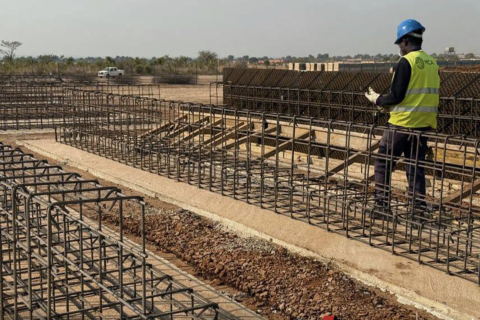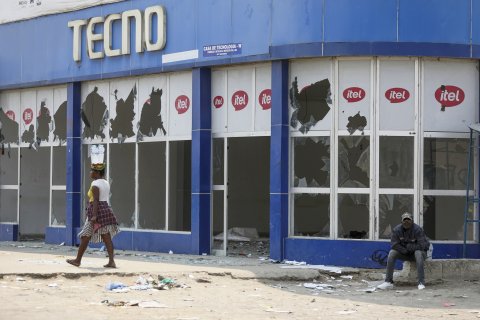The data are contained in the report, which Lusa had access to this Thursday, carried out by the National Department of Food Security, of the National Directorate of Agriculture and Livestock (DNAP), of the Ministry of Agriculture and Fisheries in the provinces of Cunene, Huíla and Namibe, between March and May 2021, with a survey in 17 municipalities.
The document, dated August, aims to present the results of the analysis of the Classification of Phases of Food Insecurity (IPC) and acute malnutrition caused by drought and other external factors.
"The results allowed us to conclude that 1.32 million people face a situation of acute high food insecurity", says the report, indicating that this number corresponds to 49 percent of the population "that is in need of urgent intervention".
A summary table divides the situation into phases, with the first 31,260 people in food security, the second 820,998 people in stress situations, the third 1,008,245 people in crisis situations, the fourth 307,288 people in emergency situations, and the fifth phase zero people in a disaster situation.
The projection for the period between October 2021 and March 2022, indicates in the first phase a number of 482,825 people in food security, the second with 638,303 people in 'stress' situations, the third with 1,167,337 people in crisis situations, the fourth with 416,660 people in an emergency situation, and the fifth phase zero people in a disaster situation.
The document highlights that the drought observed in the last two agricultural years, the context of economic crisis since 2014, the increase in the cost of living and the covid-19 pandemic crisis, since March 2020, resulted in the current context of acute food insecurity in three provinces.
According to the report, the shortage of crops has seriously affected people's access to food in the southern region of Angola, with a strong agricultural and livestock vocation, worsening the nutritional status of the population.
"With the tendency of accelerated reduction of food reserves, the situation tends to evolve to the level of food crisis, as shown by the data presented in the table", warns the document, which adds: "Humanitarian assistance, until the next harvest, is a necessary action to avoid the worsening of the acute food insecurity of the communities".
With 34 percent of the population in IPC Phase 3 (crisis) and 11.4 percent in IPC Phase 4 (emergency), people in this situation, the report notes, "are either facing difficulties in accessing food, or are they just able to meet their own needs. minimal food needs, using crisis and/or emergency strategies".
The scarcity of rain and recurrent effects of drought, which have significantly reduced agricultural production, the main source of food for rural households, and caused loss of animals due to lack of pasture and water, the widespread increase in food prices and the Grasshopper plagues in some communities are also mentioned as some of the factors in the current situation.
"For the months of October 2021 to March 2022, this number could rise to 1.58 million people, in a situation of acute food insecurity, which corresponds to 58 percent of the population of the 17 surveyed municipalities", of which 42 .9 percent in the crisis phase and 15.3 percent in the emergency phase, highlights the document.
"The aggravating factor is that these are months of food shortages, characterized by rising prices on the domestic market, with the next agricultural harvest only starting in March 2022, if there is regular rainfall," the report emphasizes.
The document highlights that food insecurity is present in all municipalities, but some have a higher prevalence of the population in crisis or emergency, namely Cahama, Curoca and Namibe (Cunene), Gambos (Huíla), Virei and Camucuio (Namibe), with more 60 percent of the total population in phases three and four (crisis and emergency) in the period between July and September 2021.
"Although the aforementioned municipalities remain more serious in the projection period, coincides with the lean season, the 17 municipalities will have to be supported and adequately monitored until March 2022, to avoid further deterioration of the acute food insecurity situation of the communities", points out the report.
With regard to acute malnutrition, the IPC analysis methodology indicates that in 10 eligible municipalities in the three provinces, 11,400 children between 6 and 59 months suffer or may suffer from this condition in the next 12 months and need treatment.
"In terms of the seriousness of the situation, in the period between April and September (...), corresponding to the time the survey was carried out, the municipalities of Humpata and Jamba (Huíla) and Bibala and Moçâmedes (Namibe) were classified in a serious situation (IPC Phase 3, acute malnutrition)", the report reads.
The municipalities of Cuanhama and Cuvelai (Cunene), Chibia and Quilengues (Huíla) and Camucuio (Namibe) were classified in the alert phase (Phase 2 of IPC, acute malnutrition), with the municipality of Namacunde (Cunene) being the least affected. and classified in the acceptable stage (IPC Stage 1, acute malnutrition).







